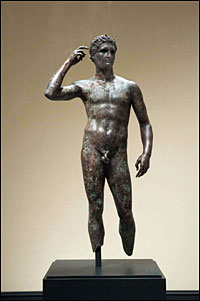
Looting; that never ending problem. It's no secret that looting and the antiquities unearthed by looting stain the museum world's reputation today. Names like Marion True and the MET come to mind when looting is discussed. In recent years, many countries have tried to put measures in place (with varying success) to stop looters and drain the illegal antiquities market of merchandise. Apparently, though, some countries are also trying to make it easier for looters to do their work.
Friday, January 30, 2009
Looting made easy
Posted by
Primvs Pilvs
at
7:16 PM
0
comments
![]()
Saturday, January 24, 2009
Notizie meravigliose

Art museums are usually thought of as stuffy, elitist institutions. You don't go to an art museum to have a good time; you go to an art museum to learn. I've always though that learning is a good time, but I can see where people are coming from when they complain about art museums. Many museums don't go the extra mile in making a visit an "experience." Many do though, and I think that's wonderful. Visiting a museum should be more engaging than simply looking at an artifact behind a glass case. The museum I visit the most, the Milwaukee Art Museum, does a good job of incorporating world renowned art with informative histories, descriptions and displays. If I were in charge, I would go a step further, but that's the topic of a previous post.
Posted by
Primvs Pilvs
at
2:40 PM
0
comments
![]()







